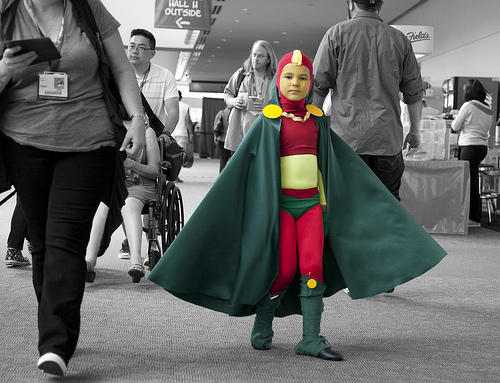Revisiting the Four Primary Pillars of Novel Construction
Over the last five-plus months we’ve been exploring the four primary, essential components of novel building, which I label in this course “corner pillars.” I spent a bit of time on these because they truly are the foundation of your novel—and if those four pillars aren’t structurally sound, your novel will collapse. Really and truly.
If you are joining in late to this course, all you have to do is go back to the first post the first week of January and work your way through these four pillars. My advice to anyone wanting to craft a really great novel that stands up to scrutiny and the test of time is to take the time to ensure that these four key elements in your novel are thoroughly developed and don’t have any weak spots.
Before I plow ahead to pillar #5, I want to step back a moment and take another holistic look at these four pillars. I mentioned that you need to work on all four at once. You don’t have to start with any particular one or go in any order. Think more of juggling all four, adding bits to each one as you brainstorm these four components. They work together like a well-oiled machine, each part fitting perfectly in position with the others.
Mind mapping these four pillars together will help you strengthen them all until you have a truly strong and lasting support. Then you can move on to the other eight support pillars.
Let’s Review Those Four Pillars
So we first looked at concept with a kicker. You can’t just run with an idea or a basic premise. You need to create the kind of story concept that will make people excited to learn more about your novel just by hearing the one-line story concept you’ve come up with. Your story concept, all by its lonesome, should get people saying “wow.” So what is a one-line story concept all about?
Michael Hauge, screenwriting consultant and best-selling author of Writing Screenplays That Sell, encourages writers to come up with one sentence that tells your concept—and that sentence is all about the next pillar we looked at—the protagonist with a goal. When you can write that one sentence to describe your story by expressing the protagonist’s goal with the emphasis on the kicker—or what makes your story so unique—you will be on track. And along with noting the protagonist and his goal, you need to identify the third pillar: the central conflict with high stakes.
Remember: A Concept Is Not Just a Cool Idea
There is a huge difference between this: “A teenage girl in a dystopian future society has to struggle to survive and keep her family alive” and this: “A teenage girl conscripted to participate in deadly games foments rebellion that eventually destroys the oppressive government in order to provide hope and a future for those she loves.” The Hunger Games series is about Katniss, the heroine. It’s her story.
Your Story Is about Someone with a Goal
I agree with Hauge when he says every great story is about someone, not something. Every great story has one main character the reader roots for and cares about—a character with a visible goal that she strives to reach. It may sound simple—yes, it is! But you would be surprised how few novels I critique have this element in it at all.
The fourth pillar—theme with a heart (which we just looked at last month)—is the glue that holds the whole story together, for it’s what your novel is really about. The Hunger Games is really about a whole lot more than a girl trying to survive. It delves into issues of loyalty, self-sacrifice, how people should govern other people, and ultimately forgiveness. A lot of themes are developed on many levels throughout the three-book series.
I recently saw the movie Divergent and just read the first book (which is similar enough to the movie). If you said that Divergent was about a dystopian society in which everyone gets put into one of five different groups and has to conform to the rules of that group, you wouldn’t even be close to the concept and kicker.
You Gotta Have Conflict and High Stakes
The book (and film) is about Beatrice (Tris). The central conflict is centered on one faction led by one woman, who is intent on using another of the factions to commit genocide (essentially). Tris, the protagonist, has a goal that emerges as she trains to become an accepted member of Dauntless. She learns of this plot to kill all the members of her former faction (Abnegation) and hence must strive toward that goal—to stop this massacre—and, while doing so, save her family. We see fairly late in the movie and book this goal emerge (not at the traditional 25% mark), but the conflicts and tension she faces in her training—building allies and making enemies—play an important part. The themes, here too, grow organically from what the protagonist’s goal is.
Don’t forget: great novels have high stakes. And what are the stakes? What your protagonist must be willing to risk, what danger he will be willing to face, in order to reach his goal. When what he’s passionate about is threatened, those are high stakes.
And Finally, Theme . . .
Remember, I previously mentioned how theme is the protagonist’s goal made universal? The things your character cares most about, which is why he is going after that goal, are things lots of people care about. So if your protagonist is not really concerned about anything that concerns most people in the world, you might need to spend some time working on that pillar to give him a passion and concern for something that will resonate with other humans on the planet.
We resonate with characters who are going through tough situations and have to draw strength and courage to face obstacles. We respect characters who are assertive, humorous, humble, innovative, smart, clever, and who refuse to give up. We care about characters who care about more than just themselves. It may sound silly, but I think we read to care.
So as you write or rewrite your novel, spend a serious amount of time working on these four corner pillars. Go through all the questions on the inspection checklists (below) and see where your structure is weak.
If you are stuck and can’t quite get one of the pillars strong enough, enlist the help of other authors or a writing coach to help you work out the kinks and maybe help you find some better building materials. Don’t settle for so-so or trust that the ideas will come later on as you write the book. Build a framework, then work within it.
Think of your novel as a house and don’t keep nailing siding onto a weak, flimsy structure.
I speak truth when I say that such a weak structure will not hold up. It won’t. You will have to tear all that siding off and then rebuild the framework. Maybe that’s okay with you and part of your style, your creative process. But you know what I always say (if you’ve been following my blog for a while): Why waste weeks, months, or years of your life tearing your hair out trying to rework a novel that isn’t structurally sound (and that may need to be demolished)? Why not be smart and start with the right building materials and a proven-sturdy structure?
Don’t answer that. Just think about it. And about what you could do with all that time you could save . . .
So, next week: Pillar #5: Plots and Subplots in a String of Scenes. It’s all about Scene Structure.
Share your thoughts? Are you struggling with one pillar more than the others? What comes easiest to you? Have you learned anything neat you’d like to share that’s helped you with your story? Let’s hear it!
Inspection checklists:
Inspection Checklist 1-concept with a kicker
Inspection Checklist 2-protagonist with a goal
Inspection Checklist 3-conflict with high stakes












I love this series. I’m a pantser, so working on structure beforehand is a real challenge.
You offer great examples of high stakes, which are much more apparent in action/adventure/fantasy/mystery/thriller novels. I tend to write literary fiction (more character-driven), and women’s fiction. The stakes are still important. Can you give examples of the four pillars for writers of these genres?
Diane, literary novels need high stakes too. If you read my posts on that, high stakes center on what the character is passionate about. If she doesn’t really care about anything, it’s doubtful there is a strong story there. Women’s fiction is all about a woman who cares about something deeply–has a deep need or a clear goal. Relational dramas (I write those) reveal those core needs and goals of all the main characters and show how they clash. Theme is what the protagonist cares about in universal terms. The key is to make sure the concept is interesting enough. It may not have a big kicker like other genres tend to have, but to avoid a boring story that does not stand out from the masses, you would want to make sure you have an interesting enough premise and concept to engage the reader. You can’t just count on complex and troubled characters to carry the weight of an entire novel if there isn’t something very intriguing going on and a goal your protagonist is after.
Thanks, that’s helpful.
I write by instinct, so my drafts do have some structure, thankfully. Pinpointing the kicker, and spelling out the goals and obstacles, while vital, leaves me a bit befuddled. I can’t even seem to spell it out for successful novels. Hmm. Need to work on this aspect of the craft.
Diane, take a look at back cover copy or descriptions on Amazon for some best sellers. See if the protagonist and his goal is mentioned. See if the central conflict is mentioned. You can go to IMDB and look at various movies and read the logline or blurb that describes the movie. When you read a few dozen of those, you start seeing a pattern of sorts. If those elements are not clear to you and you can’t give a one-line story concept sentence for your story, it may be that you are not really sure just what your story is about. All too often I see this lack of clarity with writers and their novels. And if I can’t see that clear concept expressed in the synopsis they send me, almost always it is vague or missing in the novel as well.
I think I’ve mentioned in comments before that I’m working though my first novel. So, I don’t know what my process is, exactly, yet. 🙂 I think I have the four corner pillars, and your posts have really helped me solidify them and think about how to make sure they come through in the writing.
What makes me doubtful is whether or not I have enough action to pull the story from HERE to THERE. (I know where it starts and ends.) I look forward to your posts on plot and subplots, because I feel that is my weak point.
Thank you so much for developing the course for us – it is extremely helpful!
Thanks so much. I won’t be going into plot all that much. That is something specific and unique for each story, and structure will really vary. There are lots of books available on plot that can help you learn how to move the story along. I’d suggest not thinking in terms of an amount of action needed to move the plot from beginning to end. Plot isn’t necessarily action. What we’ll be looking at are scenes and how they string together as a vehicle for the plot, and I believe once writers get scene structure, keeping in mind the “four pillars” of their novel, they can create an outline of scenes that will showcase a strong plot. If you know that your hero must go after a goal and that the climax of the book is where she will either succeed or fail to reach her goal, and that everything up till that point complicates and creates harder and harder trials on the journey to that goal, you have a basic, classic structure. How you populate that story and draw in the subplots to enhance can be done many ways. If you want some things to start considering now, do a search on my blog for “plot” and “secondary characters” and read some of my previous posts. I’ve written some posts specifically on plot layers, and that tells how I layer plots to create strong, believable stories. Hope that helps.
Thanks again for this brilliant course!
I have been filling out the checklists and changing parts of my novel to suit.
You asked if I have learned anything neat that has helped me with my story, and I have, but it’s not something that I got specifically from this site or anything that I expected.
I changed from writing in the third person to the first person. That may not sound like much, but it has totally changed the way I write. It is so weird.
It has made such a difference that I HAD to share it. It might work for someone else.
I seem to be able to get into the POV character’s head on a deeper level and my descriptions of thoughts and emotions are so much better and more realistic. Even things like attitude and sarcasm seem to just pour out onto the page. I can’t describe it.
So, if this helps just one person, it will be worth it. Just try it. Switch from one to the other and just write about anything and see if it changes for you too.
I was so impressed with it that I have done a full Find and Replace in Word and changed my whole novel to first person and now I am re-editing. It has changed it into a better novel!
Thanks for the review of the four primary pillars. I’ve printed them out and will work through them before I type another word of my novel. My novel has expanded in scope as I’ve written it and many aspects seem clear to me now (they didn’t when I started), but I feel after reading your review that I’ll be doubling or trebling my work if I don’t take the time now and make sure my house is in order!
Thanks so much,I look forward to the next installment
Rosemary
Thanks for this great post. I thought of a way to raise my stakes just by reading it. I think you’re right that we read to care.it helps our empathy grow by standing in someone else’s shoes for a while.
Not quite done yet with the first four Checklists, but just reading your posts in this course has been illuminating…
As a hard-core pantser, I tend to leave the sorting out of stuff until the end. I can see the lure of being able write the story and say, “Well, I’m pretty much done!” at the end, although considering how much time I am putting into planning my next book, I am not sure there is much difference in the amount of time I will be putting into the book, whether it’s at the beginning or at the end.
However, since my next novel is for my Senior Project, which has a strict deadline, I am putting on the Planning Helmet for this particular trip, and your advice is definitely something I will be referring to again and again. At the very least, it has been/will be an interesting learning experience. 🙂
I’d love to hear how the whole “planning ahead” method works for you. Let me know when you’re done. I hope you will be converted!
You really helped me to see that I had a good theme, even though I didn’t know what adding a theme to my story was. I didn’t use it much though, now I can work it more into my story in an organic way. Thank you. I am about to edit my novel, and seeing the need for my protagonist’s goal to be more built has REALLY helped. It’s a romance with what I feel is am important message that I don’t use as a way to preach, but have it playing out naturally among the characters. His goal was very clear, but she’s just getting over the grief of her late husband, and I didn’t really have a goal for her, now I do, and I love that without realizing it at first, it clashes with his goal. 😉 There were already sparks, now there will be fire. 🙂 Thank you for helping me dig deeper. Been bouncing ideas off my husband as I read your posts, and he loves how my story is already growing. So thankful for all you’ve shared. 🙂
I’m so glad this post has helped you. You might check out the book (The 12 Key Pillars of Novel Construction) to go in depth into all twelve pillars. There’s also a workbook with hundreds of brainstorming questions. That’s super useful to hammer out ideas and decide which ones will work best. Have fun building your story!
Hello, I looked both up. 🙂 I can find a digital/kindle copy of the 12 Pillars book, but not the workbook. Do you know if there is a digital copy or not? My parents had to move in with us, and I no longer can just write in one place, so I’ve gotten all my writing resources on my laptop so I can move around the house depending on where people are, or out of the house, as I have no room to have a designated writing area anymore. 🙁 Would love to find a digital copy of the workbook if at all possible. 🙂